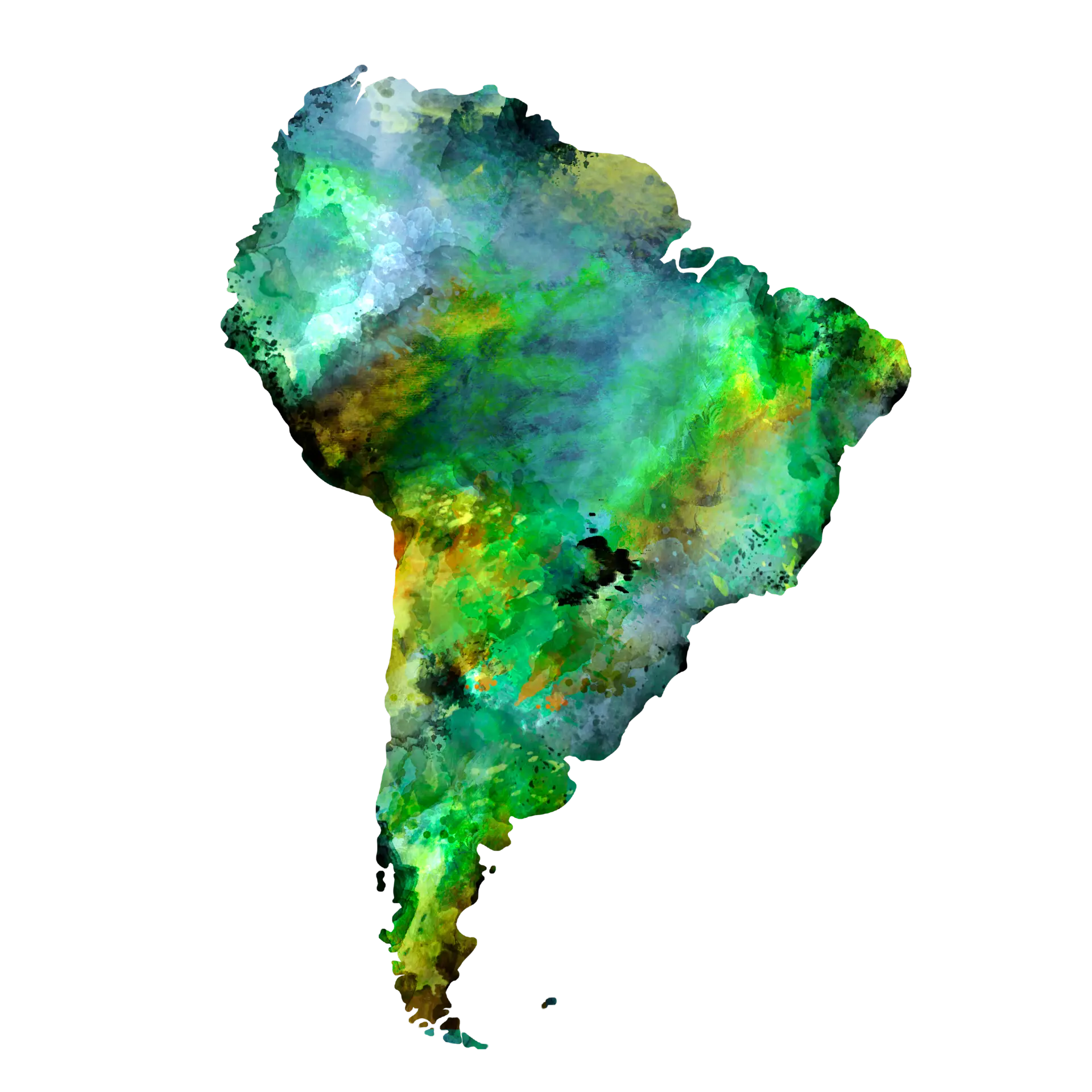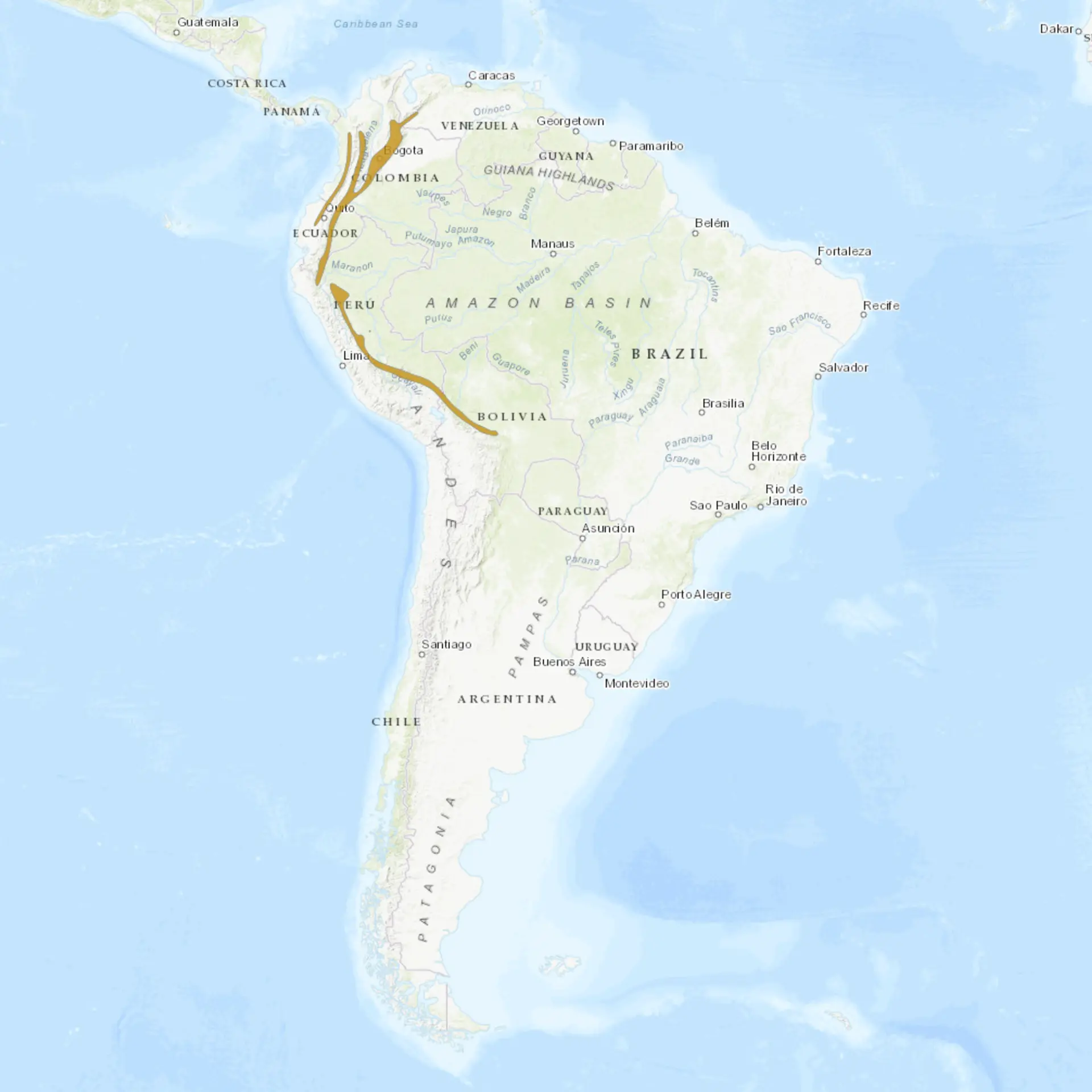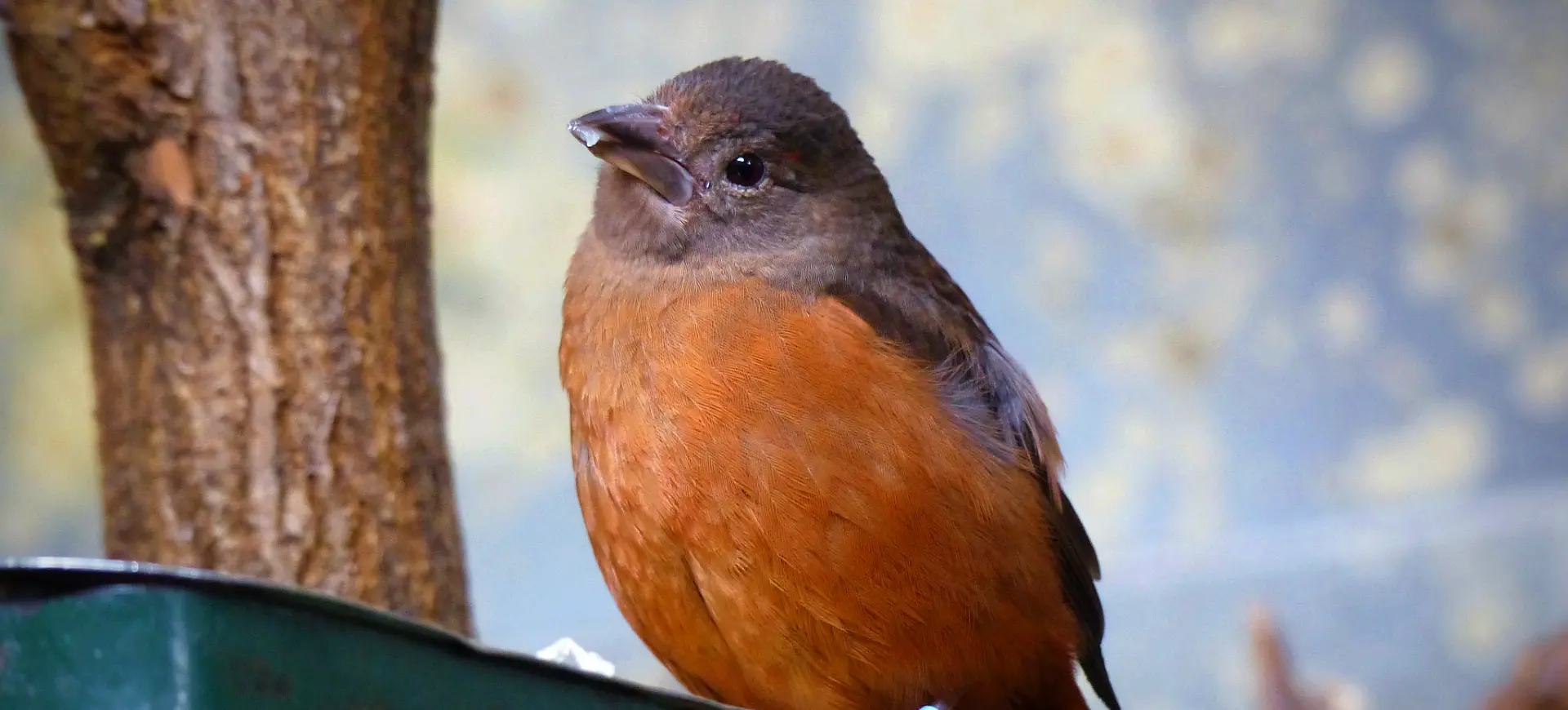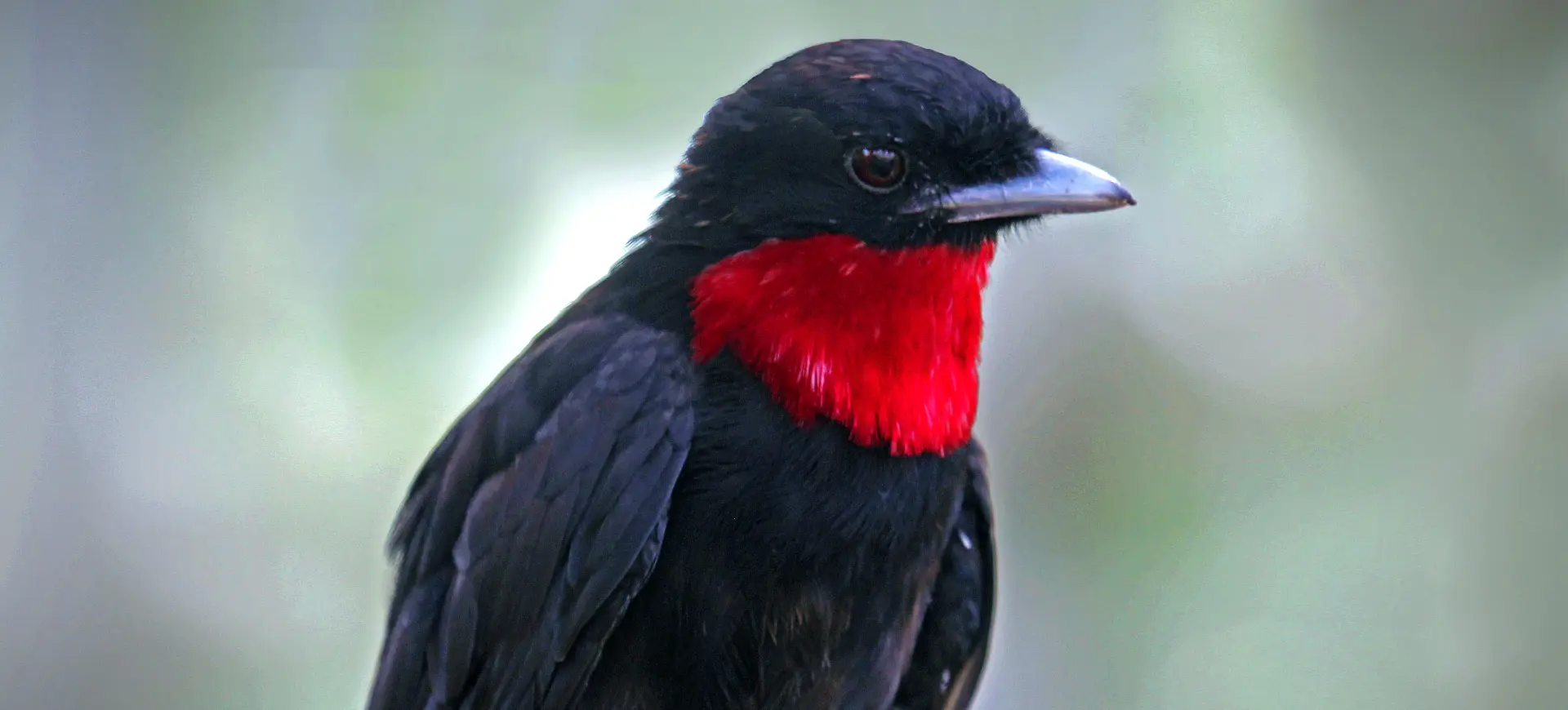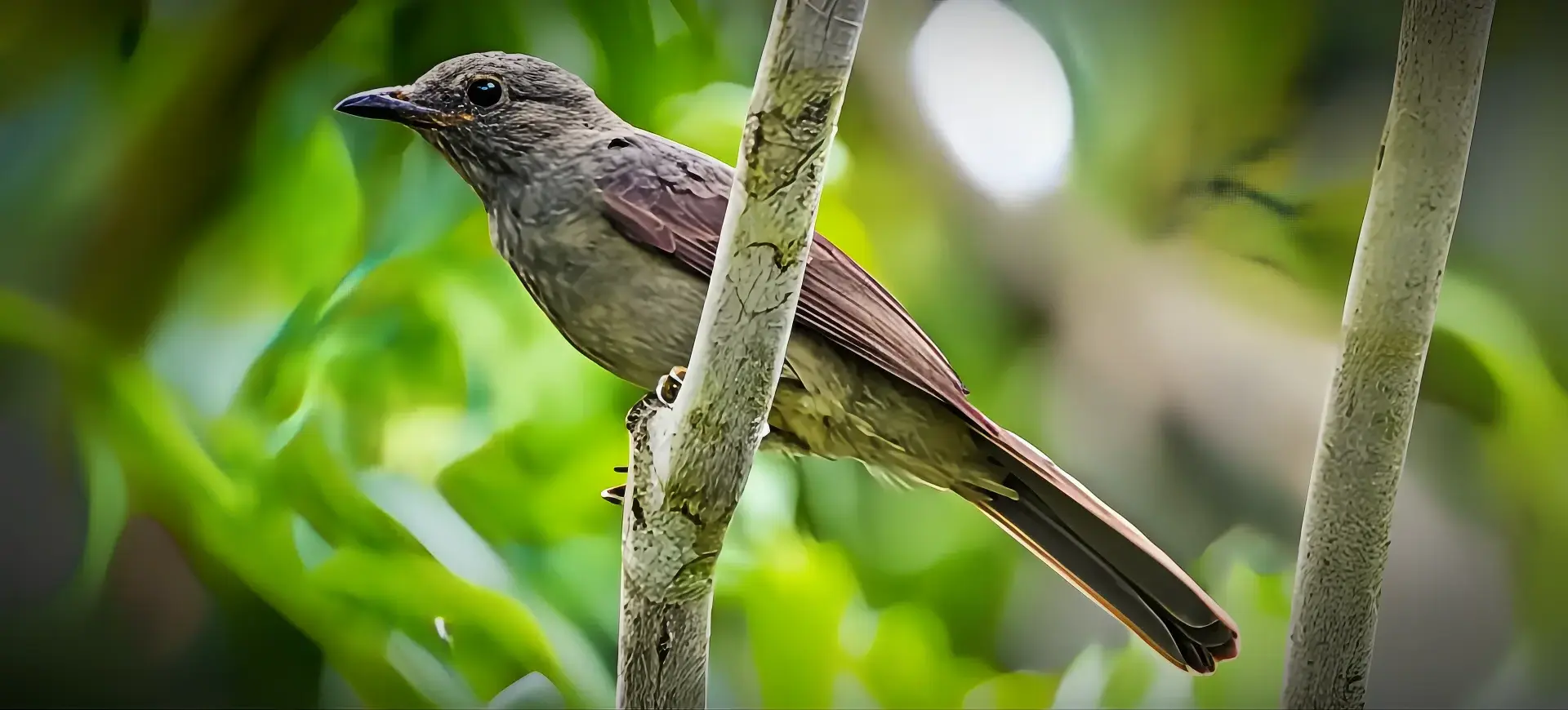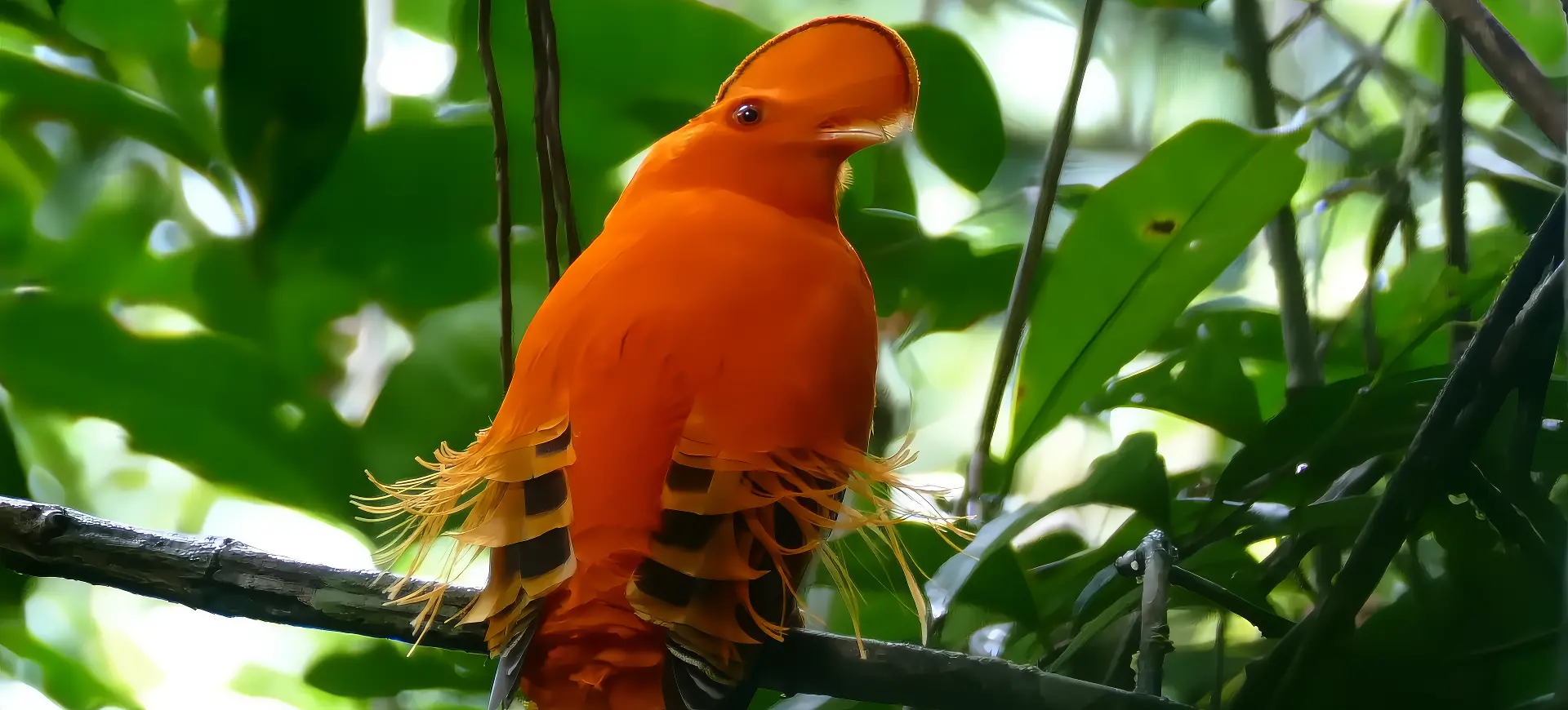Overview
The Andean Cock-of-the-Rock (Rupicola peruvianus) is a vibrant bird species famous for its brilliant orange-red plumage and unique mating displays. Native to South American Andean cloud forests, this species thrives in humid, vegetation-rich environments. Males are particularly notable for their large disk-like and fan-shaped crest, which they use in elaborate courtship rituals. Conversely, females are more subdued in color, featuring a duller orange-brown plumage, which serves as camouflage.
The Andean Cock-of-the-Rock is most active during dusk and dawn, feeding primarily on fruits supplemented by insects and small reptiles. This species exhibits a lekking behavior where males gather to compete for female attention through displays of plumage and sound. They are known for their loud, echoing calls, which resonate through the rainforest. Their nests, built by females, are mud structures attached to cliffs or cave walls.
As a species, the Andean Cock-of-the-Rock plays a vital role in its ecosystem. They are important seed dispersers, aiding in the propagation of various fruit-bearing forest plants. Their presence indicates a healthy, biodiverse environment, as they require specific habitat conditions to thrive. Conservation efforts for this species also benefit other fauna and flora in their habitat, ensuring the preservation of a rich ecological tapestry.
Taxonomy
Kingdom
Phylum
Class
Order
Family
Genus
Species
Type
Current distribution:
The Andean Cock-of-the-Rock is found primarily in the Andean regions of South America. Its range extends from Venezuela through Colombia, Ecuador, Peru, and Bolivia. They are distributed unevenly within this range, with populations concentrated in areas with suitable habitat. Their presence is a strong indicator of undisturbed, healthy cloud forests.
Their range has slightly expanded in recent years due to conservation efforts and reforestation. However, their distribution remains limited to areas with specific environmental conditions. This species is generally sedentary, with little long-distance movement observed. Urban expansion and deforestation have fragmented their habitat, impacting local populations and distribution patterns.
Physical Description:
The male Andean Cock-of-the-Rock is renowned for its striking orange-red plumage and prominent disk-like crest. This crest, fan-shaped tail, and bright red-orange body make the male unmistakable in its natural habitat. Females, in contrast, have a more muted coloration, primarily in shades of orange-brown, which helps them blend into their surroundings. Both sexes have strong, hooked beaks suited for their fruit-based diet.
The bird’s body is robust, with strong legs and feet adapted to clambering through forest branches. Their short and rounded wings indicate a lifestyle more suited to quick bursts of flight through dense forest canopies than long-distance flying. Their eyes are positioned to provide a wide field of vision, crucial for spotting predators and rivals in their complex habitat. The overall physical structure of the Andean Cock-of-the-Rock reflects its adaptation to life in the vertical cliffs and dense forests of the Andes.

Lifespan: Wild: ~8 Years || Captivity: ~10 Years

Weight: Male: 8.8-9.2 lbs (4-4.2 kg) || Female: 7.9-8.4 lbs (3.6-3.8 kg)

Length: Male: 11-12 in (28-30 cm) || Female: 9-10 in (23-25 cm)

Height: Male: 12-13 in (30-33 cm) || Female: 10-11 in (25-28 cm)

Wingspan: Male & Female: 18-20 in (46-51 cm)

Top Speed: 25 mph (40 km/h)
Characteristic:
Native Habitat:
The Andean Cock-of-the-Rock inhabits the cloud forests of the Andes Mountains, a region characterized by high humidity and dense vegetation. These forests provide an ideal habitat with abundant food sources and shelter. The species prefers elevations ranging from 1,640 to 7,900 feet (500 to 2,400 meters), with frequent cloud cover. This environment plays a crucial role in their mating rituals, as the dense foliage offers seclusion for lek sites.
Their nests are typically built on rocky outcrops or caves, protecting them from predators and the elements. The females are solely responsible for nest construction and raising the young. The nests are made from mud and plant material and strategically placed in locations difficult for predators to access. The choice of nesting sites reflects the species’ adaptation to life in rugged, vertical landscapes.
Biomes:
Biogeographical Realms:
Continents:
Diet:
Diet & Feeding Habits:
The Andean Cock-of-the-Rock is primarily frugivorous, feeding on various fruits in its mountainous habitat. Their diet includes figs, berries, and drupes, which they forage from the dense vegetation. In addition to fruits, they occasionally consume insects, small reptiles, and amphibians, providing essential proteins. This varied diet is crucial for their high-energy lifestyle, especially during mating seasons.
Their feeding habits play a significant role in seed dispersal within their ecosystem. As they consume fruits, the seeds are later excreted in different locations, aiding forest regeneration and biodiversity. They typically feed in the early mornings and late afternoons, avoiding the midday heat and peak predator activity. The structure of their beaks and strong neck muscles are well-adapted for handling and processing various fruit types.
Mating Behavior:
Mating Description:
The Andean Cock-of-the-Rock is known for its unique and elaborate mating behavior, particularly in males. During the breeding season, males gather in communal display grounds known as ‘leks,’ where they perform to attract females. These displays involve a series of jumps, flaps, calls, and postures, showcasing their vibrant plumage and physical prowess. The leks are typically located in areas with dense vegetation, providing a secluded environment for these rituals.
Females visit these leks to select a mate, often choosing based on the male’s display quality and territory. After mating, the female is solely responsible for building the nest, incubating the eggs, and caring for the young. The males do not participate in nesting or rearing the offspring; instead, they focus on attracting more mates. This mating system highlights a significant sexual dimorphism in behavior and social roles within the species.
Reproduction Season:
Birth Type:
Pregnancy Duration:
Female Name:
Male Name:
Baby Name:
Social Structure Description:
The Andean Cock-of-the-Rock exhibits a unique social structure, especially during the breeding season. Males are solitary or form small groups at lek sites to attract females, demonstrating a competitive yet cooperative behavior. These leks are central to their social interactions, where males display their plumage and vocal abilities to compete for mates.
Outside the breeding season, the Andean Cock-of-the-Rock tends to be more solitary or found in small, loose groups. Females are typically solitary, especially when nesting and rearing chicks. Their social interactions are largely centered around feeding and mating, with less emphasis on forming long-term bonds or cohesive groups.
Groups:
Conservation Status:
Population Trend:
The Andean Cock-of-the-Rock has a stable population in the wild, with no immediate threats of significant decline. However, localized populations can be affected by habitat loss and fragmentation due to human activities such as deforestation and urban expansion. Their populations are generally healthy and robust in regions where their habitat remains intact and protected.
Conservation efforts have been successful in some areas, contributing to the stability of their populations. Education and awareness campaigns have also played a role in reducing threats to their habitat. Continued monitoring and habitat conservation are crucial for the long-term sustainability of their populations. Efforts to study and understand their ecological role further contribute to effective conservation strategies.
Population Threats:
The primary threat to the Andean Cock-of-the-Rock is habitat loss due to deforestation and land use changes. Logging, agriculture, and urban expansion significantly impact their natural habitats, leading to fragmentation and reduced breeding sites. Climate change also poses a long-term threat, as it can alter the ecological balance of their cloud forest habitat.
Illegal wildlife trade is another concern, although less significant than habitat loss. Hunting for feathers and capture for the pet trade, while not widespread, does affect local populations. Conservation measures need to address these threats to ensure the species’ survival. Education and community involvement in conservation are key to mitigating these risks.
Conservation Efforts:
Conservation efforts for the Andean Cock-of-the-Rock focus primarily on habitat preservation and restoration. Protected areas and national parks in the Andes play a critical role in safeguarding their habitats. Environmental organizations collaborate with local communities to promote sustainable land use practices that benefit both the species and the people. Research and monitoring activities are essential to understanding the species’ needs and adapting conservation strategies accordingly. Breeding programs in captivity are limited but have been established to ensure a backup population and to gain insights into their breeding and behavior. These programs also serve as educational tools, raising awareness about the species and its ecological importance.
Additionally, eco-tourism initiatives have been developed, providing economic benefits to local communities while promoting conservation. Educational campaigns and community engagement are crucial in promoting the protection of the Andean Cock-of-the-Rock. These initiatives help reduce illegal trade and encourage local support for conservation efforts. International collaborations also contribute to the exchange of knowledge and resources, enhancing the effectiveness of these conservation strategies.
Additional Resources:
Fun Facts
- The Andean Cock-of-the-Rock is the national bird of Peru.
- Their distinctive crest is made of feathers that extend over their beak, almost obscuring their vision.
- They have zygodactyl feet, with two toes facing forward and two backward, aiding in gripping branches.
- Males can spend up to 70% of their day at lek sites during breeding.
- The species is known for its loud, echoing calls, integral to their mating rituals.
- They have a unique way of eating fruit: they skewer it with their beak, toss it in the air, and swallow it whole.
- Females lay only one or two eggs per breeding season, which are incubated for about a month.
- The species shows a significant sexual dimorphism, with males being more colorful and larger than females.
- Their nests, made of mud, are often reused and repaired yearly by the females.
- They bathe frequently, even in light rain, which helps maintain their vibrant plumage.

